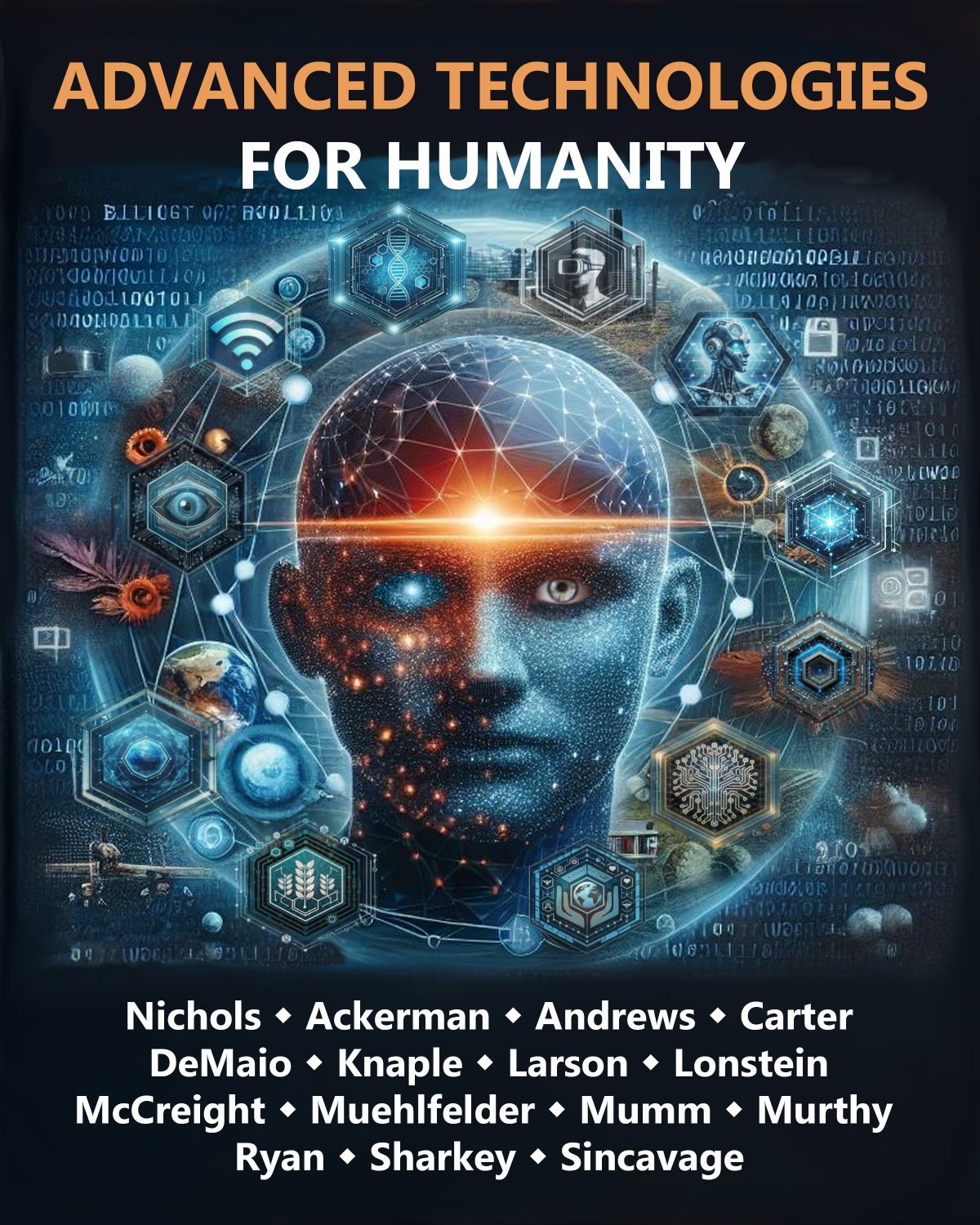Book Title: Advanced Technologies for Humanity
Edited by Senior Professor Randall K. Nichols

Book Description: ADVANCED TECHNOLOGIES FOR HUMANITY is our ninth textbook in a series covering the world of UASs / CUAS / UUVs / Space. In this book, we change the perspective from advanced weapons and intelligence (potentially harmful to humanity) to exploring the use of advanced technologies to benefit society. Two chapters focus directly on feeding the planet and improving agriculture production. Four chapters discuss AI, Mobility, Robotics, and IoT and how they benefit communities and organizations. One chapter addresses the principles of plain language and helping human readers find and understand important information. Three chapters examine specialized threats of Biotechnology and AI, Social media behaviors, and the Metaverse. Two chapters demonstrate the use of a Systems Dynamics View and Balanced Humanitarian Technology Security [BHTS], the use of Wargaming with AI, and how it can be applied to planning ahead. The last topic covered is quantum computing and its effects on every phase of information, decision-making, and cryptography. Coauthored by SMEs in their fields, our book is a vision and hope of using advanced technologies to benefit society.
Contents
Book Information
Book Description
ADVANCED TECHNOLOGIES FOR HUMANITY is our ninth textbook in a series covering the world of UASs / CUAS / UUVs / Space. In this book, we change our perspective from advanced weapons and intelligence (potentially harmful to humanity) to exploring the use of advanced technologies to benefit society. The authors chose vital technologies that we envision can be used to help humanity survive or turn into less threatening outcomes for society. Chapter One introduces Wargaming and Artificial intelligence. In it, we understand how OODA decision loops can be used for plans and societal decisions. Chapter two addresses Mobility. It is a deep look into the devices that control our daily lives. It presents a holistic view of connectivity and the changes that need to be made.
Chapter three discusses the Metaverse and the risks that society is taking. Chapter four brings us back to basics. It teaches how to write in plain language and research important information. It brings a slew of support links to the table. Chapter five shows us the plan and promise of IoT. Everything is connected. Chapter six focuses on advanced robotics and how it is transforming humanity. What autonomous systems will we have to contend with in the future? Chapter seven is a powerful look into the intersection of biotechnology and AI. It is a combination of warning and future possibilities. Chapter eight is crucial to leveraging advanced technologies to enhance food production. Chapter nine presents a systems-dynamic view of humanitarian efforts. It introduces a balanced humanitarian technology security {BHTS} system. Chapter ten is a complex review of quantum computing limits, enhancements, applications, and core principles. It is not for the faint of heart. Chapter eleven asks the question: has social media worn out its welcome? It reveals the laws that protect us and censor us. It is a needed reality check. The ending chapter entitled Feed The Planet is a story to be heard. It envisions organizing hanging gardens in Africa that can produce food for millions of families. It is a beautiful vision that sums up our goals.
License
Advanced Technologies for Humanity Copyright © 2024 by Nichols, R.K.; Ackerman, P.E, Andrews, E., Carter, C.M., DeMaio, D.D., Knaple, B.S., Larson, H., Lonstein, W.D., McCreight, R., Muehlfelder, T., Mumm, H.C., Murthy, R., Ryan, J.J.C.H., Sharkey, K.L., Sincavage, S.M. is licensed under a Creative Commons Attribution-NonCommercial-NoDerivatives 4.0 International License, except where otherwise noted.
Subject
Technology, Engineering, Agriculture, Industrial processes

